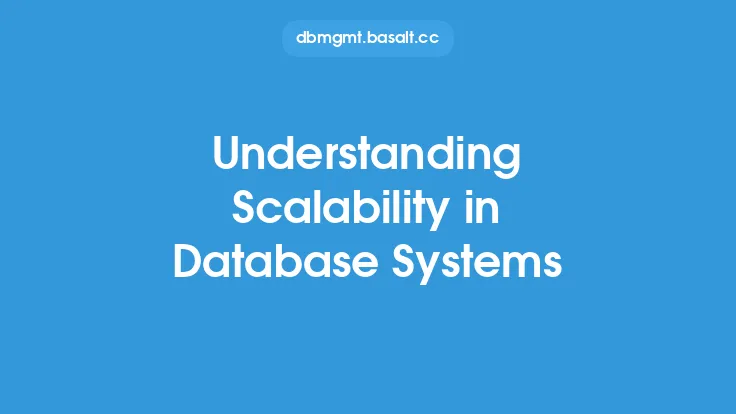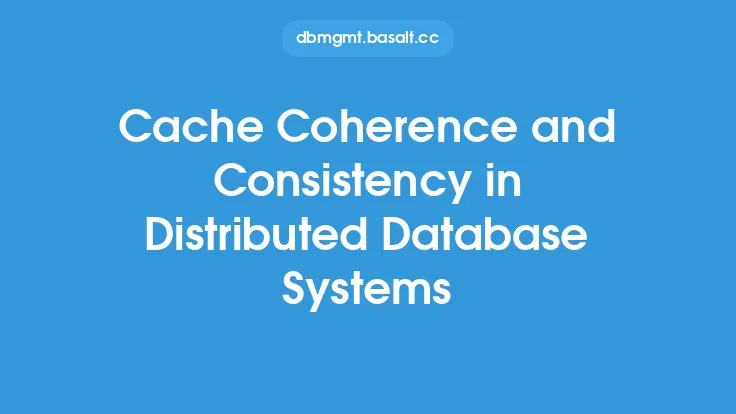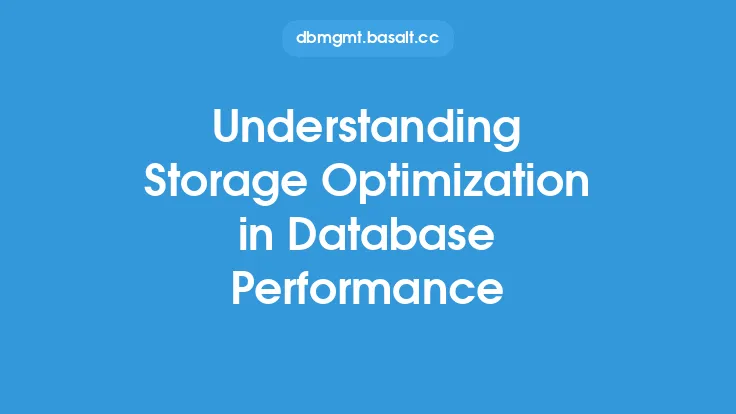Database systems rely heavily on caching mechanisms to improve performance by reducing the time it takes to access data. At the heart of these caching mechanisms lies the cache hierarchy, a multi-layered structure designed to optimize data retrieval and storage. Understanding the cache hierarchy is crucial for database administrators and developers seeking to optimize database performance.
Introduction to Cache Hierarchy
The cache hierarchy in database systems is a hierarchical structure consisting of multiple levels of cache, each with its own characteristics and functions. The hierarchy is designed to minimize the time it takes to access data by storing frequently accessed data in faster, more accessible locations. The typical cache hierarchy consists of the following levels:
- Level 1 Cache (L1 Cache): This is the smallest and fastest level of cache, built into the CPU. It stores the most frequently accessed data and instructions.
- Level 2 Cache (L2 Cache): This level of cache is larger and slower than L1 cache, but still relatively fast. It is usually located on the CPU or in a separate chip.
- Level 3 Cache (L3 Cache): This is the largest and slowest level of cache, shared among multiple CPU cores in multi-core processors.
- Main Memory (RAM): This is the system's main memory, where data is stored in volatile memory.
- Disk Storage: This is the slowest level of storage, where data is stored on disk drives.
How Cache Hierarchy Works
The cache hierarchy works by storing data in the fastest, most accessible location possible. When the CPU requests data, it first checks the L1 cache. If the data is not found in the L1 cache, it checks the L2 cache, then the L3 cache, and finally main memory. If the data is not found in main memory, it is retrieved from disk storage. This process is known as a cache miss. When a cache miss occurs, the requested data is retrieved from the next level of the hierarchy and stored in the current level, so that future requests for the same data can be fulfilled more quickly.
Cache Line and Block Size
In the cache hierarchy, data is stored in units called cache lines or blocks. The size of these blocks can vary, but it is typically a power of 2 (e.g., 64 bytes, 128 bytes). The cache line size affects the performance of the cache hierarchy, as larger blocks can reduce the number of cache misses, but may also increase the amount of unnecessary data that is transferred.
Cache Replacement Policies
When the cache is full and new data needs to be stored, a cache replacement policy is used to decide which data to replace. Common cache replacement policies include Least Recently Used (LRU), First-In-First-Out (FIFO), and Random Replacement. The choice of cache replacement policy can significantly affect the performance of the cache hierarchy.
Cache Hierarchy in Database Systems
In database systems, the cache hierarchy plays a critical role in optimizing performance. Database systems use a variety of caching mechanisms, including buffer pools, result caches, and query caches, to store frequently accessed data. The cache hierarchy in database systems is designed to minimize the time it takes to access data, by storing frequently accessed data in faster, more accessible locations.
Benefits of Cache Hierarchy
The cache hierarchy provides several benefits, including:
- Improved performance: By storing frequently accessed data in faster, more accessible locations, the cache hierarchy can significantly improve database performance.
- Reduced latency: The cache hierarchy can reduce latency by minimizing the time it takes to access data.
- Increased throughput: By optimizing data retrieval and storage, the cache hierarchy can increase throughput and support more concurrent users.
Challenges and Limitations
While the cache hierarchy is a powerful tool for optimizing database performance, it also presents several challenges and limitations, including:
- Cache thrashing: When the cache is too small to hold all the required data, cache thrashing can occur, leading to poor performance.
- Cache contention: In multi-core processors, cache contention can occur when multiple CPU cores compete for access to the same cache resources.
- Cache coherence: In distributed database systems, cache coherence can be a challenge, as multiple nodes may have different versions of the same data.
Best Practices for Optimizing Cache Hierarchy
To optimize the cache hierarchy in database systems, several best practices can be followed, including:
- Monitoring cache performance: Regularly monitoring cache performance can help identify bottlenecks and areas for optimization.
- Optimizing cache size: Optimizing cache size can help minimize cache thrashing and improve performance.
- Using efficient cache replacement policies: Using efficient cache replacement policies, such as LRU or FIFO, can help minimize cache misses and improve performance.
- Optimizing database design: Optimizing database design, including indexing and partitioning, can help reduce the load on the cache hierarchy and improve performance.
Conclusion
In conclusion, the cache hierarchy is a critical component of database systems, playing a key role in optimizing performance by minimizing the time it takes to access data. Understanding the cache hierarchy, including its structure, function, and challenges, is essential for database administrators and developers seeking to optimize database performance. By following best practices for optimizing the cache hierarchy, database systems can achieve improved performance, reduced latency, and increased throughput.





